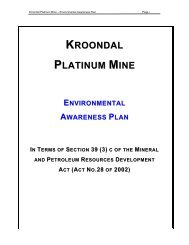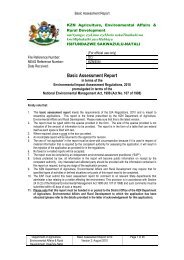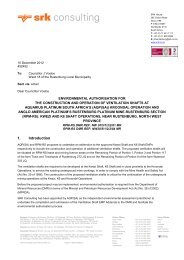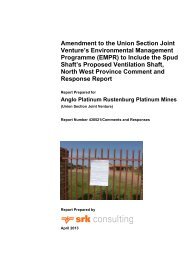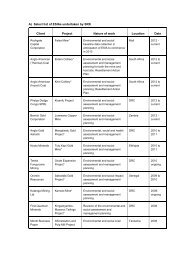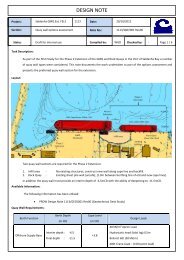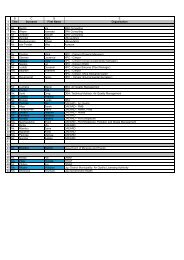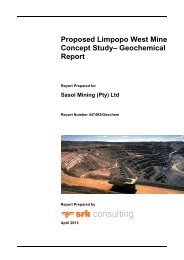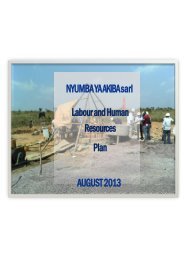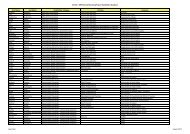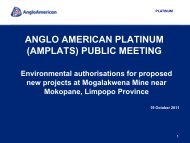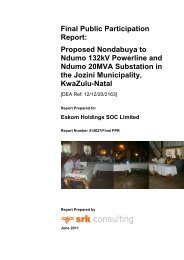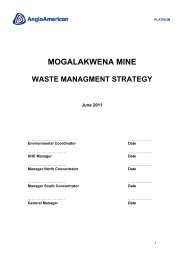Biodiversity (1 - SRK Consulting
Biodiversity (1 - SRK Consulting
Biodiversity (1 - SRK Consulting
Create successful ePaper yourself
Turn your PDF publications into a flip-book with our unique Google optimized e-Paper software.
Figure 45. A north-easterly view from Windhoekberg towards Springbok. Note the two main<br />
habitat types of the study: terrestrial to the left and rupiculous towards the right.<br />
Terrestrial habitat forms a large part of the study site and is of great ecological<br />
significance. Many herpetofauna species have burrows or live almost permanently in the<br />
soil. The grassy plains are the most extensive habitat on site, characterised by the flat<br />
topography and red sandy surface, but with a mosaic of patches of grass and/or gravel.<br />
Most of these were found near the washes of the Koa River drainage system, but also<br />
extending up slopes to the feet of the various mountains and hills scattered across the<br />
landscape.<br />
The open plains grade into the red sand and dune fields, but most noticeable is that the<br />
various gravels are no longer on the surface and the grass clumps are larger, but more<br />
widely spaced. Very few termitaria or moribund termitaria, which are the preferred<br />
habitat for many herpetofauna species, were found.<br />
113



